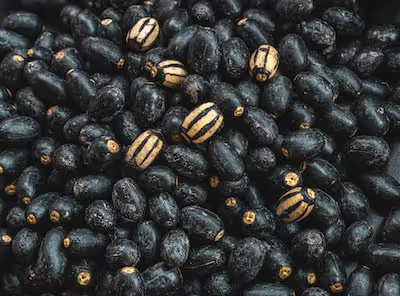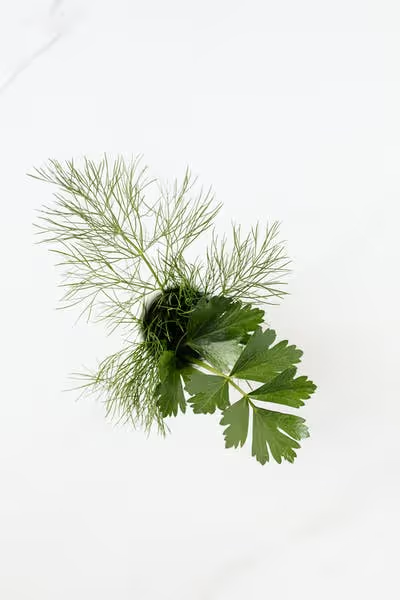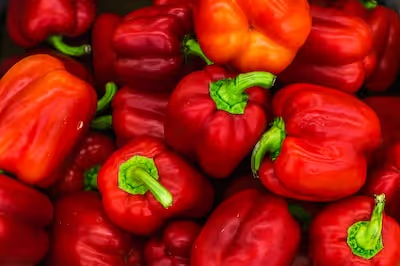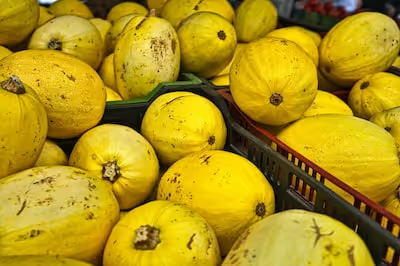Growing Tarragon: A Simple Guide to Planting Success

Growing Tarragon
Growing tarragon delivers bold flavor and fragrance right to your garden bed. Pick a sunny spot, loosen well-drained soil, then position young tarragon plants about 18 inches apart. Water lightly, letting the soil dry between soaks, and you'll soon savor vibrant, fresh tarragon in your kitchen—keep reading to get your herbs off the ground.
Cheatsheet: Quick-Start Guide to Thriving Tarragon
🌱 Choose the Right Spot
- Plant in full sun; slight afternoon shade helps in hot climates.
- Soil: loose, well-drained, pH 6.5-7.5.
🧑🌾 Tools and Products You'll Need
- French tarragon starts (Artemisia dracunculus)
- Organic potting mix or garden soil
- Mulch (straw or wood chip)
- Hand trowel
- Watering can
- Pruning shears
- Container (if growing in pots; 12 in/30 cm deep)
🌡️ Planting & Care Steps
- Spacing: Set 18-24 in (45-60 cm) apart.
- Planting Time: After last frost (soil ≥ 60°F/16°C).
- Water: Keep soil lightly moist—never soggy.
- Mulch to suppress weeds and conserve moisture.
- Prune tips often to prevent flowering for best leaf flavor.
- Overwinter: Pot and bring indoors if colder than 10°F/–12°C.
🍽️ Nutrition & Self-Sufficiency
Tarragon contains antioxidants, aids digestion, elevates home cooking. Harvest as needed; fresh sprigs outperform dried 4:1 in flavor intensity.
📊 Success Stats
- Yields up to 1 lb (0.45 kg) fresh leaves per plant per season.
- Fresh tarragon costs $40+/lb at markets.
-
Growing Tarragon: A Simple Guide to Planting Success
I grow tarragon for its clean licorice snap and the spell it casts on eggs, chicken, and summer salads. Growing Tarragon rewards restraint, good drainage, and a sharp harvest knife.
I learned that the hard way in a wet spring that turned a gorgeous clump into compost. The fix was simple and repeatable.
Know your tarragon: French, Russian, and Mexican
French tarragon (Artemisia dracunculus var. sativa) brings the flavor chefs crave. It is sterile, so you plant divisions or cuttings, not seeds.
Russian tarragon (A. dracunculus) grows from seed and survives neglect, yet tastes thin. Mexican tarragon (Tagetes lucida) loves heat and mimics the flavor with a marigold twist.
“French tarragon rarely sets seed and is propagated by division in spring.” Royal Horticultural Society (RHS)
Site and soil that tarragon actually likes
Pick sun for 6 to 8 hours, with light afternoon shade in hot summers. Cold mornings and hot afternoons? Give it morning sun and a breeze to dry leaves fast.
Soil should drain freely with a pH near 6.5 to 7.5. I mix sandy loam with compost at 4 parts to 1 and avoid heavy manure that pushes bland growth.
Planting calendar and spacing
Set plants outside after the last frost when soil hits 55 to 60 F, about 13 to 16 C. Space clumps 18 to 24 inches apart, about 45 to 60 cm.
Plant crowns level with the soil line and water in once, slowly and deeply. I tuck a thin mulch ring 1 inch thick, 2.5 cm, to steady moisture without smothering crowns.
Containers that never sulk
Use a 10 to 14 inch pot, 3 to 5 gallons, with big drainage holes. A gritty mix works best, like peat or coir plus perlite or pumice at 60 to 40.
Keep saucers empty. I raise pots on feet so spring storms do not turn the roots to mush.
Water and feeding for strong flavor
Water when the top inch, 2.5 cm, dries, then soak to 6 inches, 15 cm. Skip daily sips that train weak roots.
Feed light. I topdress with a half inch, 1.2 cm, of compost in spring and a pinch of balanced organic fertilizer at 3 to 4 week intervals if growth stalls.
University of Minnesota Extension notes that tarragon prefers full sun and well drained soils and dislikes wet feet.
Pruning, flowering, and that oil content
Pinch tips early to branch the plant and keep it leafy. Snip flower buds as they appear to hold the anise bite.
Harvest in the cool morning once stems reach 8 to 10 inches, 20 to 25 cm. I take no more than one third of the plant per cut to keep it churning.
Overwintering and longevity
French tarragon is hardy in USDA Zones 4 to 8. Cut stems to 2 to 4 inches, 5 to 10 cm, after frost and mulch 2 to 3 inches, 5 to 7.5 cm, with shredded leaves.
Container plants overwinter best in a bright, cool room at 50 to 60 F, 10 to 16 C, with sparse water. Mexican tarragon behaves as a tender perennial in Zones 8 to 11 and as an annual elsewhere.
Propagation that actually takes
- Divisions in spring: Lift a healthy crown, slice into 3 to 5 eye pieces, and replant at once.
- Softwood cuttings late spring: Take 4 to 6 inch, 10 to 15 cm, tips, strip lower leaves, dip in rooting hormone, then stick in a 50 to 50 perlite and peat mix under high humidity for 2 to 3 weeks.
- Seed only for Russian tarragon: Sow shallowly at 65 to 70 F, 18 to 21 C, and thin hard. Expect rapid growth with modest flavor.
“Best flavor is in fresh leaves. Drying is not very successful.” Royal Horticultural Society
Common problems and clean fixes
- Root rot: Improve drainage, reduce watering frequency, and lift into raised beds or containers.
- Powdery mildew: Space plants well, water early, and prune for airflow. A simple 1 percent horticultural oil spray can help.
- Aphids: Blast with water and invite lacewings with dill or alyssum nearby.
- Weak flavor: Check sun hours, pinch buds, and avoid high nitrogen fertilizers.
Harvest, storage, and preserving the bite
Use fresh within hours for the clearest aroma. I wrap sprigs in a damp towel, then chill for 3 to 5 days.
Freeze chopped leaves in olive oil or butter in ice cube trays. Tarragon vinegar holds flavor for months and makes dressings sing.
Buying guide: plants, seeds, and gear that earns its keep
- French tarragon plants: Choose labeled Artemisia dracunculus var. sativa with tight internodes and a peppery fragrance. Avoid plants in bloom or with woody, bare bases.
- Russian tarragon seed: Use for volume or hedging in poor soils. Taste a leaf before committing it to prime bed space.
- Mexican tarragon starts: Ideal for hot, humid summers and patio pots. Expect late season flowers that pull in pollinators.
- Containers: 12 inch wide, 14 inch deep pots with gritty mix. Unglazed clay dries faster, which helps.
- Irrigation: A simple 1 gph, 3.8 lph, dripper per pot prevents feast and famine watering.
Soil prep snapshot
- Loosen to 8 inches, 20 cm, and blend 2 inches, 5 cm, of compost.
- For heavy clay, add coarse sand or fine gravel at 20 percent by volume.
- Target pH 6.5 to 7.5. Lime or sulfur only after a soil test.
Missouri Botanical Garden lists French tarragon at 24 to 36 inches tall, prefers full sun, and requires excellent drainage.
Containers vs beds: quick picks
- Containers: Best for wet climates, renters, or balcony cooks. Flavor tends to peak with tighter control over water.
- Beds: Best for cold winters and long lived clumps. Add gravel in the root zone if rainfall tops 1 inch, 25 mm, weekly in spring.
Companions and clever pairings
Plant near chives, thyme, and strawberries for staggered harvests and tidy airflow. I avoid parking it next to water hungry basil that skews the irrigation schedule.
For the kitchen, pair tarragon with lemon, capers, mild mustard, and spring peas. Bearnaise on a grilled chicken thigh fixes a rough day faster than therapy.
Season plan for Growing Tarragon
- Early spring: Divide, repot, and feed lightly. Set out after frost.
- Late spring: Pinch tips, start cuttings, and set drip lines.
- Summer: Harvest weekly and remove buds. Water deep and infrequent.
- Fall: Final harvest for vinegar and freezer cubes. Cut down and mulch.
- Winter: Keep crowns dry. Check containers monthly and water sparingly.
Evidence and references I trust
- Royal Horticultural Society: propagation guidance and flavor handling for French tarragon.
- University of Minnesota Extension: sun, soil, and cultural practice notes for herbs that dislike wet roots.
- Missouri Botanical Garden Plant Finder: height, spread, and site requirements for Artemisia dracunculus.
- UC ANR and Penn State Extension: container media ratios, irrigation flow rates, and disease prevention best practices.
Frequently Asked Questions About Growing Tarragon
What soil conditions benefit tarragon growth?
Tarragon grows best in well-draining, fertile soil with a neutral to slightly alkaline pH between 6.5 and 7.5. Improve heavier soils with compost or organic matter to enhance drainage and nutrient content.
Can tarragon thrive in full sun or partial shade?
To ensure optimal growth, plant tarragon in full sun, providing at least 6 to 8 hours of direct sunlight daily. Light shade may suffice, but abundant sunlight promotes more flavorful foliage.
How often should you water a newly planted tarragon?
Initially, water newly planted tarragon frequently to maintain consistently moist but not waterlogged soil. After establishment, reduce watering to once or twice per week, adjusting for rainfall. Tarragon prefers moderately dry soil conditions.
What is the ideal planting time for tarragon?
Plant tarragon after the threat of frost has passed, ideally when temperatures consistently stay above 45°F (7°C). Early spring through early summer provides ideal growth conditions for successful establishment.
Should you fertilize tarragon plants?
Tarragon typically requires minimal fertilization. However, applying a balanced organic fertilizer or compost once during early spring can enhance growth. Avoid excessive nitrogen, which may lead to weaker flavor and leggy growth.
How much space should you allow between tarragon plants?
Give each tarragon plant approximately 18 to 24 inches (45 to 60 cm) of space in all directions. Adequate spacing allows sufficient air circulation, reduces disease risk, and promotes vigorous growth.
Can tarragon grow successfully in containers?
Container growing suits tarragon well. Choose pots at least 12 inches (30 cm) deep and wide, filled with quality potting mix that drains easily. Ensure containers have drainage holes, and water carefully to avoid soggy conditions.
When and how should you harvest tarragon?
Harvest tarragon leaves as needed, starting once the plant reaches about 12 inches (30 cm) tall. Snip stems in the morning for peak flavor, and regularly trim to encourage healthy new growth throughout the growing season.
Growing Tarragon is about more than sticking a slip in the ground and hoping for the best. Give this herb a sunny spot, well-drained soil, and a little respect—it’ll reward you with flavor that punches way above its weight in the kitchen. Water just enough, snip often, and let it sprawl a bit. Remember, fresh tarragon brings a wild, anise kick to simple dishes, and a single healthy plant can see you through the season. Want to branch out? Consider pairing tarragon with other bold herbs like lovage or sorrel for a patch that keeps your palate guessing. Give growing tarragon a shot—sometimes the best flavors come from the simplest plants.
The Money Saver's Guide to Tarragon Growing
Start from Seed Alternatives
- Root division: Divide established plants every 3 years; yields quicker growth at no added cost.
- Cuttings: Snip healthy stems (10-15 cm / 4-6 in), root in rainwater-filled jars, transplant when roots reach 2 cm (¾ in).
Budget-Friendly Soil Enrichment
- Coffee grounds: Mix spent grounds into soil monthly for nitrogen-rich compost.
- Eggshell powder: Sprinkle crushed eggshells around plants monthly; provides essential calcium and deters slugs naturally.
Maximize Yield, Minimize Cost
- Early harvest: Regular clipping promotes abundant leaf regrowth with zero investment.
- Dry excess leaves: Air-dry excess tarragon in bundles upside-down indoors; store leaves in airtight jars for extended cooking use.
Long-Term Savings through Self-Sufficiency
- Perennial planting: One initial investment yields repeat harvests for 3-5 years without replanting.
- Seed saving: Allow tarragon flowers to mature, collect seeds, store in paper envelopes, keep cool and dark for next season at no cost.
Interesting Fact:
Homegrown tarragon costs 80% less than store-purchased, saving regular cooks approximately $60 (€55) annually.
Find out which plants will thrive in your garden!
Answer a few fun questions and get custom plant recommendations perfect for your space. Let’s grow something amazing together!

start your season





